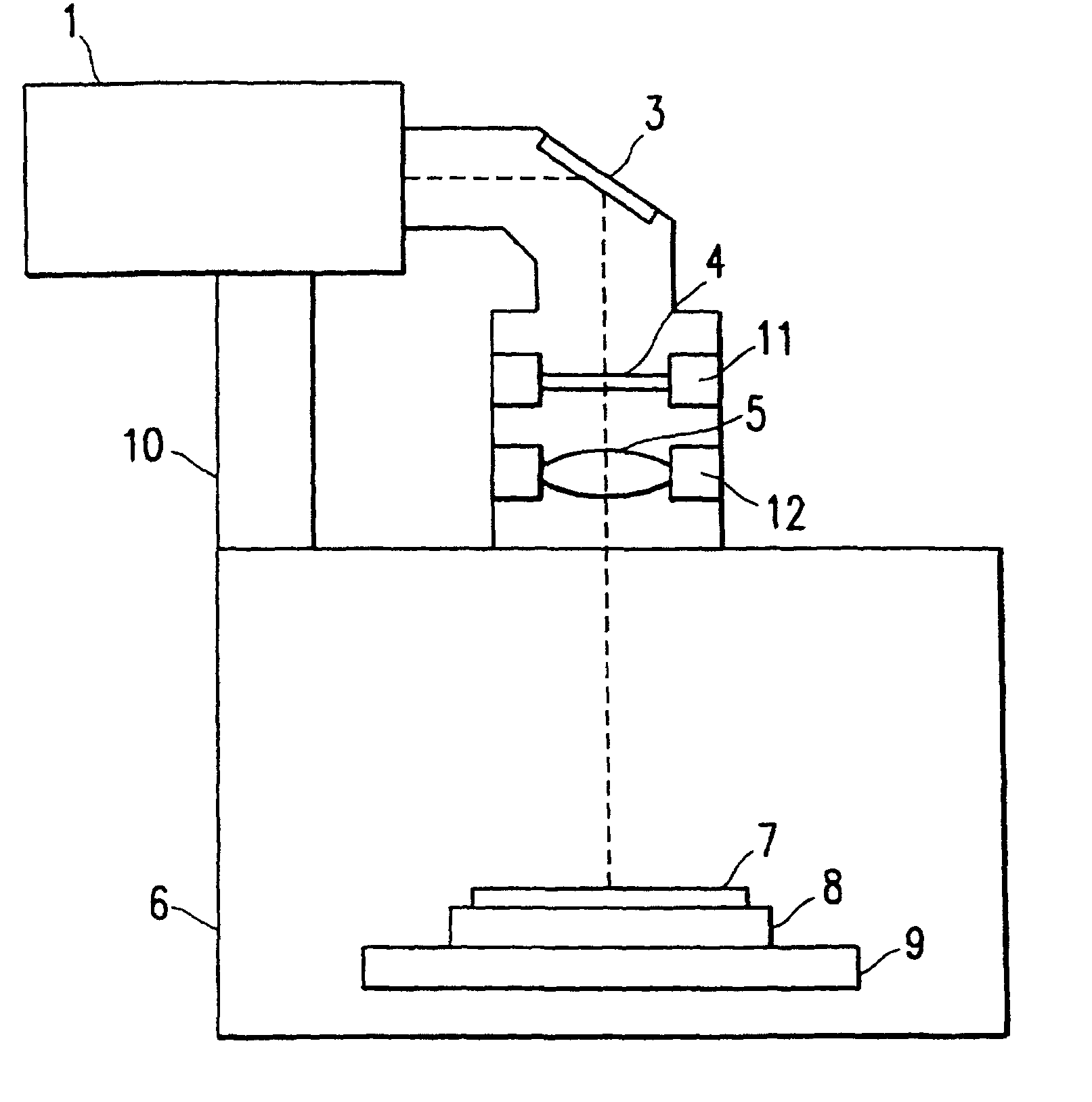Ceramic sintered product and process for producing the same
- Summary
- Abstract
- Description
- Claims
- Application Information
AI Technical Summary
Benefits of technology
Problems solved by technology
Method used
Image
Examples
experiment 1
[0052]A cordierite powder having an average particle diameter of 3 μm was blended with powders of Y2O3, Yb2O3, Er2O3 or CeO2 having an average particle diameter of 1 μm at ratios shown in Tables 1 and 2, followed by mixing in a ball mill for 24 hours. The mixed powders were then molded in metal molds under a pressure of 1 ton / cm2. The molded articles were introduced into a pot of silicon carbide, fired under the conditions shown in Tables 1 and 2, and were cooled down to 1000° C. at average cooling rates shown in Tables 1 and 2 to obtain various ceramics.
[0053]The thus obtained ceramics were polished and ground into a size of 3×4×15 mm, and their coefficients of thermal expansion were measured at 10 to 40° C. Relying upon the ultrasonic pulse method, furthermore, their Young's moduli were measured at room temperature. The results were as shown in Tables 1 and 2.
[0054]The ceramics were also measured for their relative densities according to the Archimedes' method. The results were as...
experiment 2
[0061]Powders of various additives were mixed into the cordierite powder (having an average particle diameter of 2 μm and a BET specific surface area of 2 m2 / g) so as to obtain compositions shown in Tables 3 to 6. The mixed powders were molded in metal molds under a pressure of 1 ton / cm2.
[0062]Among the powders of additives, the silicon nitride powder, silicon carbide powder and silicon oxinitride powder that were used possessed an average particle diameter of 0.6 μm, and the powders of other additives that were used possessed an average particle diameter of 1 μm.
[0063]The obtained molded articles were introduced into the pot of silicon carbide, and were fired and cooled under the conditions of Tables 3 to 6 to obtain sintered products. The samples were prepared from the sintered products in the same manner as in Experiment 1, and were measured for their coefficients of thermal expansion and Young's moduli, and were further identified for their crystal phases other than the cordieri...
experiment 3
[0071]A cordierite powder having a purity of not lower than 99% and an average particle diameter of 3 μm was blended with powders of oxides of rare earth elements Y2O3, Yb2O3, Er2O3 or CeO2 having an average particle diameter of 1 μm at ratios shown in Tables 7 and 8, followed by mixing in a ball mill for 24 hours. The mixed powders were then molded in metal molds under a pressure of 1 ton / cm2 to obtain molded articles having a relative density of 58%.
[0072]The molded articles were introduced into the pot of silicon carbide or alumina, and fired in an open air at temperatures shown in Tables 7 and 8 for 5 hours. The obtained sintered products were measured for their relative densities relying on the Archimedes' method. The results were as shown in Tables 7 and 8.
[0073]After the firing, the heat treatment was further conducted in a high-pressure atmosphere under the conditions shown in Tables 7 and 8 for one hour. The pressurized processing conditions were changed as shown in Tables ...
PUM
| Property | Measurement | Unit |
|---|---|---|
| Temperature | aaaaa | aaaaa |
| Fraction | aaaaa | aaaaa |
| Percent by mass | aaaaa | aaaaa |
Abstract
Description
Claims
Application Information
 Login to View More
Login to View More - R&D Engineer
- R&D Manager
- IP Professional
- Industry Leading Data Capabilities
- Powerful AI technology
- Patent DNA Extraction
Browse by: Latest US Patents, China's latest patents, Technical Efficacy Thesaurus, Application Domain, Technology Topic, Popular Technical Reports.
© 2024 PatSnap. All rights reserved.Legal|Privacy policy|Modern Slavery Act Transparency Statement|Sitemap|About US| Contact US: help@patsnap.com









